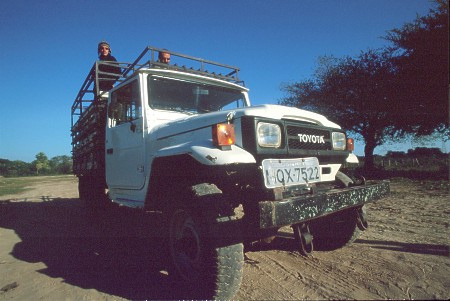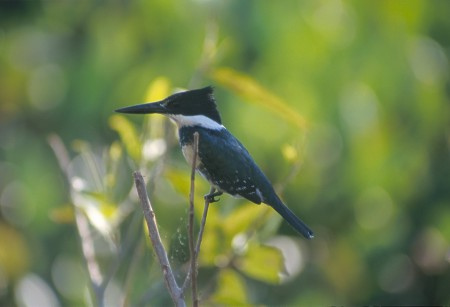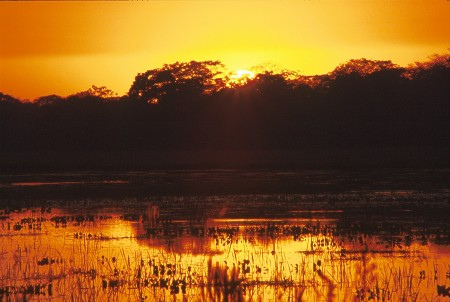The Northern Pantanal
The Northern Pantanal comprises around a third of the total Pantanal area. Its notably rich in wildlife, with some areas harbouring what's believed to be the world's highest concentration of Jaguars. A drive along the Transpantaneira is also popularly regarded as one of the best wildlife viewing experiences in South America. Besides wildlife the region has an exuberant culture - with major festivals in Cuiabá, Poconé and Vila Bela da Santíssima Trindade.
The Northern Pantanal region comprises about a third of the total Pantanal area, and is more aquatic in nature than the south. Its comprised of a plain with a large number of rivers, lakes and ponds - which flood and link together during the wet season. The area is punctuated with forested hills which remain above the water level and provide a refuge for wildlife through the wet season. Archaeological evidence also suggests that these hills provided the location of the first human settlements in the region.
The Northern Pantanal was also the first Pantanal region to become the focus for European settlement. This settlement was driven by the discovery of gold in the early 18th century - leading to the founding of Cuiabá, Pocone and Vila Bela da Santíssima Trindade (then on the frontiers between the rival Portuguese and Spanish empires). This early settlement, and the range of cultures involved has left behind a rich cultural heritage which visitors to the region can still witness today.
Even though its outside the Pantanal, the city of Cuiabá serves as the hub for travel in the region. However, while passing through, it's also highly recommended that visitors try sampling museums, regional cuisine and cultural festivals which the city has to offer.
The Pantanal region around Cáceres includes several historic fazendas, ecological areas in the Taiamã and Serra das Araras Ecological Stations, and a huge annual fishing festival. The town is also a centre for several Barco-Hotels which let you explore the interior of the Pantanal in comfort.
Poconé is a must-see for wildlife. This region includes the Transpantaneira - an unpaved road which takes you into the heart of the Pantanal (and also provides access to around a dozen fazendas) with unparalleled wildlife viewing opportunities. Poconé's culture with the annual cavalhada recreating a medieval battle between Christians and Moors, and the Dança dos Mascarados are also unique.
Barão de Melgaço includes the birthplace of marechal Cândido Rondon, one of Brazil's most respected historical figures. It includes several lakes and lodges worth exploring - whereas the regional town of Jaciara is a popular destination for white water rafting.
Finally, the town of Vila Bela da Santíssima Trindade at the extreme north of the Pantanal region is an important historical centre, which was formerly the capital of the Mato Grosso territory. This provides a unique insight into Brazil's African culture - as well as a blend of Pantanal and Amazon fauna and landscapes along the Guaporé river. It's also the only location in the region where you can encounter pink Amazon river dolphins.



To view full-screen: Press the right-most button on the toolbar beneath the map.








Photo Credits: Jaguar on the banks of the Cuiabá River (Shutterstock/Joe McDonald)
Pantanal Escapes